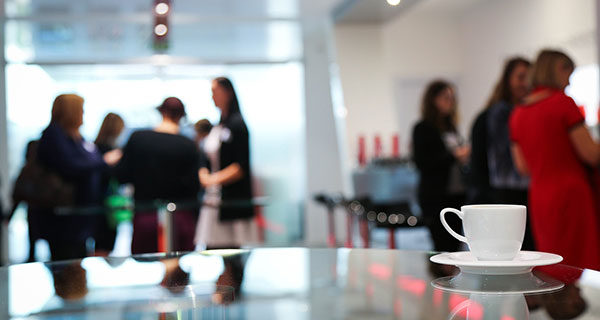 Content is king. The room in which you experience that content is queen.
Content is king. The room in which you experience that content is queen.
If you doubt that, you haven’t met a bad room situation. Or, you haven’t asked others their opinion about meeting logistics – or listened when they said something.
Believe me, people express their opinions about meeting logistics. Over an 18-month period, I regularly analyzed feedback results from quarterly town hall meetings for an organization as part of its company-wide standardized yet decentralized town hall program.
At the end of each meeting, participants were asked to complete a paper survey that was in their chair when they arrived at the meeting. The results were consistent among the at least 75 per cent who responded.
Meeting participants gave the highest ratings to the speakers, the opportunity to ask questions, the responses to questions, and topics about how the company was doing, especially about recent successes.
The lowest rated items were the meeting room and all the logistics: Room was too small or too big; room temperature was too hot or too cold or too stuffy; the chairs were uncomfortable; the audio was poor; sight lines were poor; the video screen was too small; there were no refreshments; the refreshments were unhealthy; there were too many apples and oranges and not enough cookies; there was no water; there weren’t enough diet sodas.
True, one person’s ideal setting is another person’s hell – especially for room temperature. But in between heaven and hell is a lot of space that you and meeting planners can work with.
The devil is in the details when it comes to successful meetings. This means meeting execution can trump meeting design. Work with meeting professionals in your organization. Or if you don’t have any, consult with a credentialed meeting professional.
Even I who know better sometimes get tripped up by bad room design and arrangements for larger meetings (20 people and more). This can happen when groups I speak for want to take the easy way out. In a sense, the speakers become interchangeable as they rotate through a basic room design.
In these situations, the groups believe they can save time and money by using one room design for an entire conference or day. But they sacrifice overall meeting ROI because the discomfort or inappropriateness of the meeting room subtracts from the value of the meeting content.
Here are five tips to help ensure your next meeting is a success:
1. Use rounds. Rounds – small tables that sit six to eight – give you more flexibility than theater or classroom style, assuming, of course, you want to encourage networking and interactivity among participants. Yes, if you’re using a projector for some of the meeting, people will have to adjust their chairs so they can see the screen, but they’ll manage. And if you can’t get rounds, encourage everyone to form small circles with their chairs for the interactive sessions.
2. Take a short break at least every 90 minutes when you’re meeting for more than two hours. Even if you just have people stand or move about, you’ll shake things up. Time outs help everyone re-focus on the content rather than the lousy meeting conditions.
3. Offer refreshments. Food and drink can take peoples’ minds off of bad meeting conditions too. Even a bag of candy provides relief.
4. Bring supplies. Make sure you have pens or pencils, paper, tape, marking pens and anything else you think you’ll need. (As an aside, with the growing popularity of smart phones, some people have stopped carrying pens and paper with them. So if you want them to write something you’ll need to furnish the instrument.)
5. Appoint a door monitor. This individual can decide whether the door should be open or closed depending on foot traffic, noise levels and temperatures and then act. That way, the individuals sitting near the door can concentrate more on the meeting rather than all the commotion around the coming and goings. Plus you’ll avoid having people tripping all over one other to do the duty, or the opposite in which no one takes control.
And always ask your meeting participants for their feedback. It’s their meeting too and they’ll have some helpful insights on what worked well and what could be improved for next time.
Liz Guthridge is a results-oriented, award-winning coach, consultant and trainer and founder of Connect consulting group.
The views, opinions and positions expressed by columnists and contributors are the author’s alone. They do not inherently or expressly reflect the views, opinions and/or positions of our publication.

